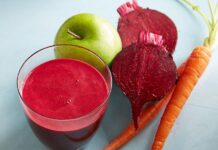List of popular traditional foods in South Africa….most common food in South Africa..Traditional Afrikaans food recipes….Traditional black South African recipes
The origin of traditional foods can either be linked to a cultural heritage of a people, colonization or civilization. In the case of the ‘Rainbow Nation’, South Africa; it is all of the above mentioned. Traditional foods in South Africa symbolize the culture of the South African people. In the case of colonization and civilization, countries like France, Germany, Malaysia, and India have greatly influenced traditional cuisines in this Rainbow Nation of South Africa.
Let’s take a look at some of the popular traditional foods in South Africa, their methods of preparation and their side dishes; as that is the center of discuss for this article.
Read on.
List of Popular Traditional Foods in South Africa
1. Braai: Braai is a short form of ‘Braaivleis’, and means ‘grilled meat’. It takes an equivalent nature with that of Barbeque; thus the name.
Method of Preparation: It can be made from meat like pork, beef, chicken, seafood, lamb, sausage (boerewors), skewered meat (sosatie), and ostrich. The meat is then grilled.
Side dishes: can be eaten with pap, grilled sandwiches (braaibrooodjie) and bread (roosterbrood).
2. Boerewors: Gotten from the words, ‘Boer’ meaning ‘Farmer’, and ‘Wors’ meaning ‘Sausage’. Boerewors means farmer’s sausage, and it is also popular in other African countries like Zimbabwe and Namibia.
Method of Preparation: It is made from minced beef (coarse in nature), seasoned with spices such as nutmeg, cloves, black pepper, coriander seed and more. In addition to using minced beef, minced pork can also be used together in making this food. However, the major ingredient to making boerewors is minced beef. Made into spiral form, it is then barbecued. Although, there are several ways to making this meal.
Side dishes: It can be taken with corn meal (pap).
3. Sosatie: Derived from the words ‘Saus’ meaning ‘spicy sauce’, and ‘Sate’ meaning ‘skewered meat’.
Method of Preparation: Sosatie is made from marinated meat chunks (could be chicken or beef) spiced with garlic, curry leaves, fried onions, chilli pepper and tamarind juice skewered on sticks, and then left overnight. It can be then grilled or fried in a pan afterwards.
4. Vetkoek: This is like a burger bun, usually golden and crispy outside and fluffy inside. A delicacy of the white Afrikaans.
Method of Preparation: Made with chicken mayo mixtures or curried mince.
Side dishes: can be eaten as fritters or with a spoonful of jam and butter.
5. Bobotie: This is minced meat spiced up with turmeric, curry, garlic, onions, salt, lemon zest and pepper.
Method of Preparation: It is baked under medium heat till fully cooked, and then topped with milk and egg mixture. Afterwards, it is allowed to set in the oven.
Side dishes: Once done, it is cut into squares and served with yellow rice (rice cooked with raisins and turmeric), fruit chutney or melted apricot jam.
6. Potjiekos: This literally means ‘Food made in a pot’.
Method of Preparation: The traditional method of preparation involves layering fresh vegetables on meat; with a little sauce, which is then cooked outside using the cast iron pot under medium heat and fire.
7. Biryani: This is made from minced meat, rice and Indian spices. The Indian spices gives the food a strong appetizing flavor.
Method of Preparation: Preparing this traditional dish involves frying the mixture before cooking as the name implies in Persian. Twists such as lentils and vegetables can be incorporated into the preparation. However, this is majorly done by locals.
8. Melkert/Milktart: This is the most famous dessert in South Africa meaning ‘milk tart’. A black South Africa delicacy also enjoyed by the white Afrikaans.
Method of Preparation: It is made with a sweet pastry crust, and a light cheesecake filling (which includes flour, sugar, eggs and milk). Though, majorly made of milk, the tart is usually topped with powdered cinnamon.
9. Koeksister: This is a sweet snack made from dough. Koeksisters are a bit tough outside and then soft and sweet inside.
Method of Preparation: It involves frying the dough until golden and crunchy. Afterwards, it is immersed in honey or cold syrup.
10. Biltong: In Dutch language, ‘Bil’ means ‘rump’ and ‘Tong’ means ‘strips or tongue’. Basically, it is dried meat. Biltong is a delicacy of the white population in South Africa called Afrikaans.
Method of Preparation: The combination of coriander, black pepper and vinegar are used in spicing the meat.
11. Bokkoms: The main ingredient for making this dish is fish. It is most times referred to as fish biltong in South Africa. Bokkoms delicacy of the black South Africans especially those in the West Coast Region of Mzanzi.
Method of Preparation: The fish is sun and wind dried, usually whole, small, mullet fish, and then salted.
Side dishes: Bokkoms could serve as a snack to many; but can also be used in making Soups, Pastas, and more.
12. Chakalaka: Made from the combination of vegetables.
Method of Preparation: Vegetables such as carrots, tomatoes, peppers and onions are combined altogether to make this dish.
Side dishes such as pap, and boerewors can be served along with chakalaka.
13. Ugali: This is one of the most common staple foods in South Africa. It is recognized as a vegetarian food and can be referred to as ‘sembe’, ‘dona’, ‘ngima’ or ‘posho’ too.
Method of Preparation: Prepared from maize, millet, and sorghum flour made into a white dough.
Side dishes such as non-vegetarian stew (salad and vegetables) can be eaten with the white dough.
14. Samp and Beans: This is a typical Zulu food, it is known as ‘Isitambu’ by the Zulus and ‘Umngqusho’ by the Xhosa people.
Method of Preparation: Prepared by cooking Samp and Beans with spices such as black pepper, and curry powder.
Side dishes: can be eaten with any rice based item.
Conclusion:
Traditional foods are known to represent a people and its culture. South Africa is home to diverse cultures, and each food stated above represent the way of life of the South African locals. So beautiful, isn’t it?
Stella-marris Achumba
This article is the intellectual property of www.nimedhealth.com.ng























